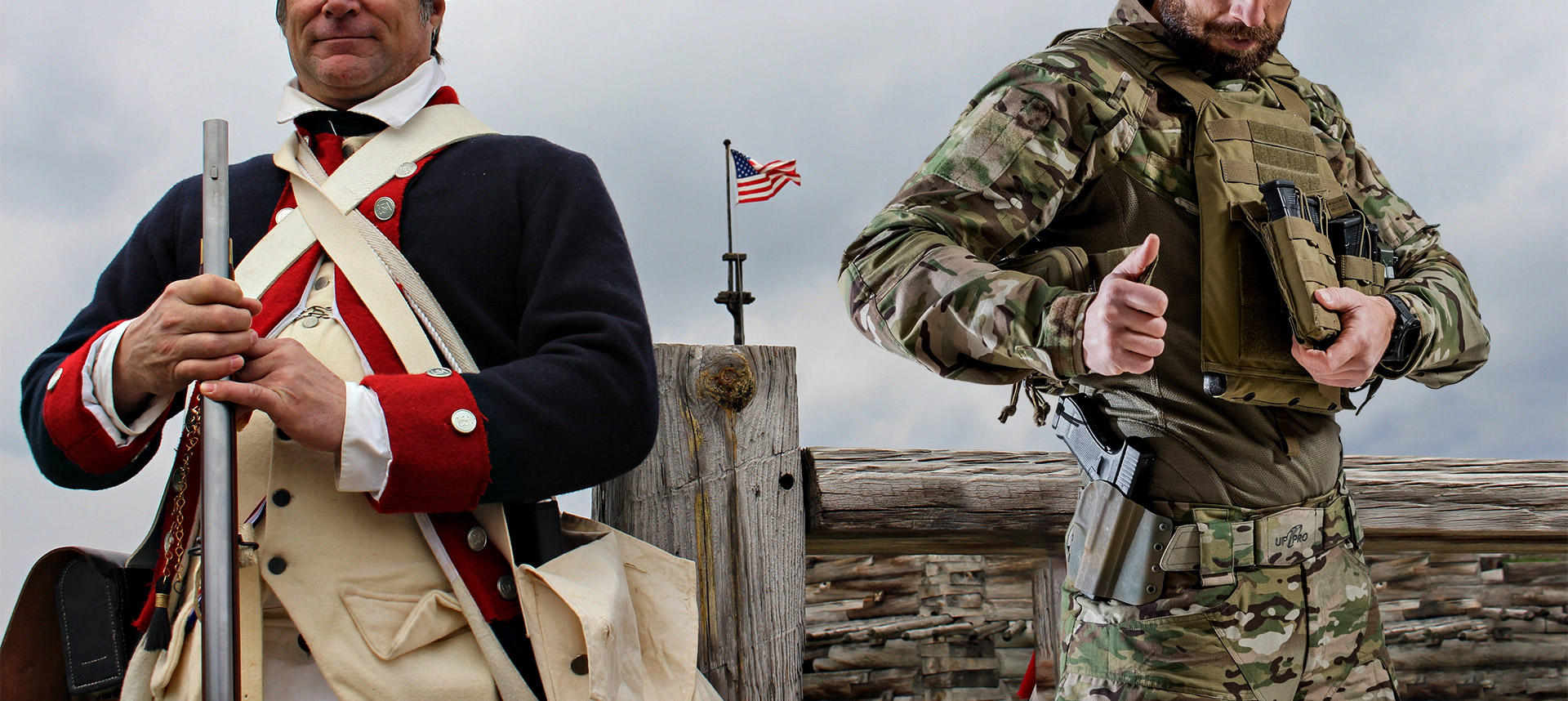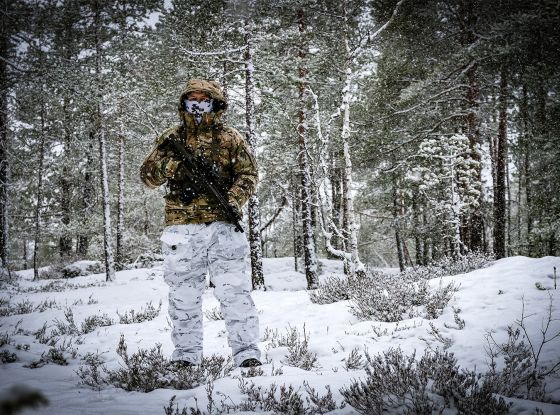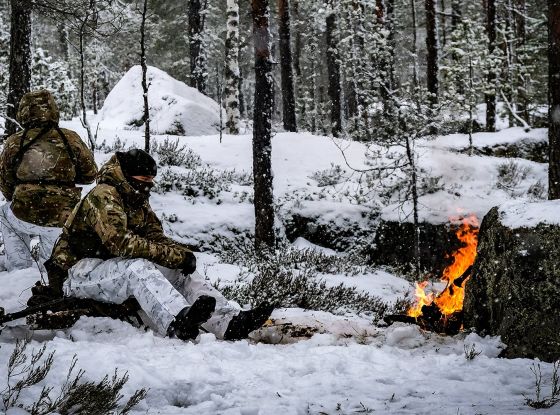The American Revolutionary War (1775-1783) was a pivotal event in the history of the United States. It marked the birth of a new nation, forged through the struggle for independence from Great Britain. The battlefield wasn't just a place of fierce combat; it was also a showcase for the diverse and evolving Revolutionary War uniforms worn by both sides.
In this blog post:
Introduction
In this blog, we'll delve into the fascinating world of military garments, examining the various styles, materials, and influences that shaped the attire of the British and Continental armies. By understanding these uniforms, we can gain a greater appreciation for the soldiers who fought bravely for their cause.
Early Revolutionary War Uniforms: A Tale of Two Armies
British Uniforms: The Red Coat and Beyond
In the early days of the conflict, the Revolutionary War uniforms of the British and American forces were markedly different. The British Army, as the well-established and professional fighting force of a global empire, had a standardized system of uniforms for its soldiers. The most iconic of these was the "red coat," a symbol of British military might and authority. These red coats were made of a thick woolen material called broadcloth, and they featured brass buttons, white linen facings, and white crossbelts. The red coat was not only visually striking but also served to intimidate opponents and boost morale among the troops.
British soldiers also wore tricorn hats adorned with a black cockade, as well as white breeches and black gaiters or leggings. Officers had more elaborate uniforms, featuring gold or silver lace and epaulettes to signify their rank. In addition, they carried a sword as a symbol of their authority and status.
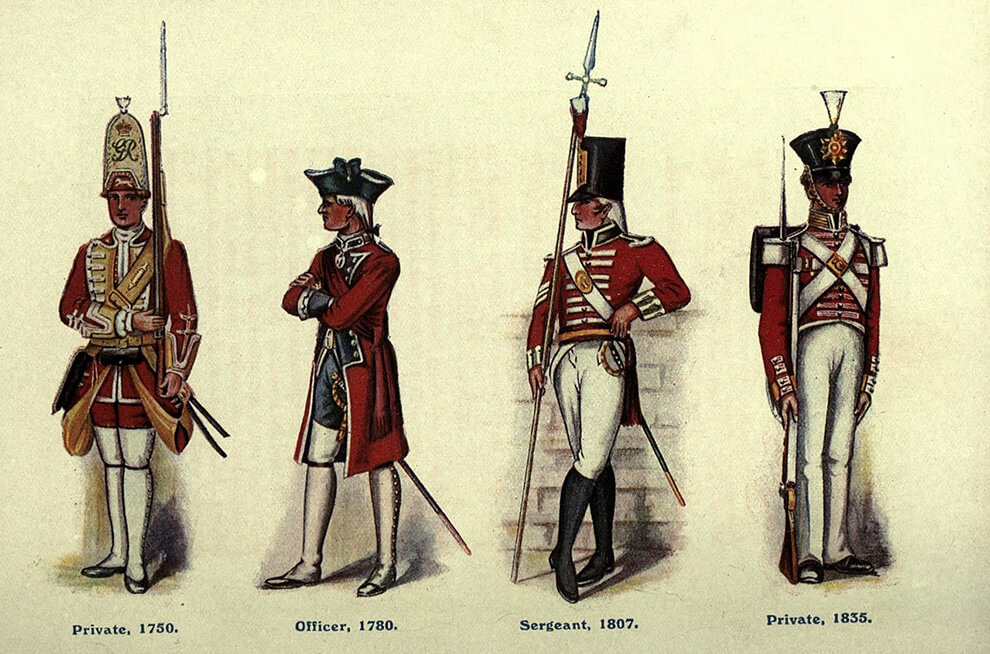
Image source: Regimental Nicknames and Traditions of the British Army (5th ed.). London: Gale & Polden. 1916. p. 53.
American Uniforms: A Patchwork of Styles
In contrast, the Continental Army's uniforms were initially far less uniform. In the early stages of the war, American soldiers often wore their civilian clothing or militia uniforms, which varied significantly in style and colour. Some militia units even wore hunting shirts, a practical and durable garment that would later become more widespread among the troops. This patchwork appearance led to confusion on the battlefield, as it was sometimes difficult to distinguish friend from foe.
However, as the conflict progressed and the Continental Army grew more organized, it began to adopt a more standardized appearance. George Washington, the commander-in-chief, personally favoured blue as the primary colour for American uniforms. In a letter to Congress in 1775, he wrote, "As the Continental Army has, unfortunately, no uniforms, and consequently many inconveniences must arise from not being able to distinguish the commissioned officers from the privates, it is desired that some step may be taken...to produce proper distinctions."
By the end of 1776, most soldiers were outfitted in blue coats with various facings, such as red for artillery, white for infantry, and green or yellow for other branches. They also wore tricorn hats, white or beige breeches, and leggings or gaiters. While these new uniforms helped to distinguish American troops from their British adversaries, they still lacked the consistency and polish of the British uniform system.
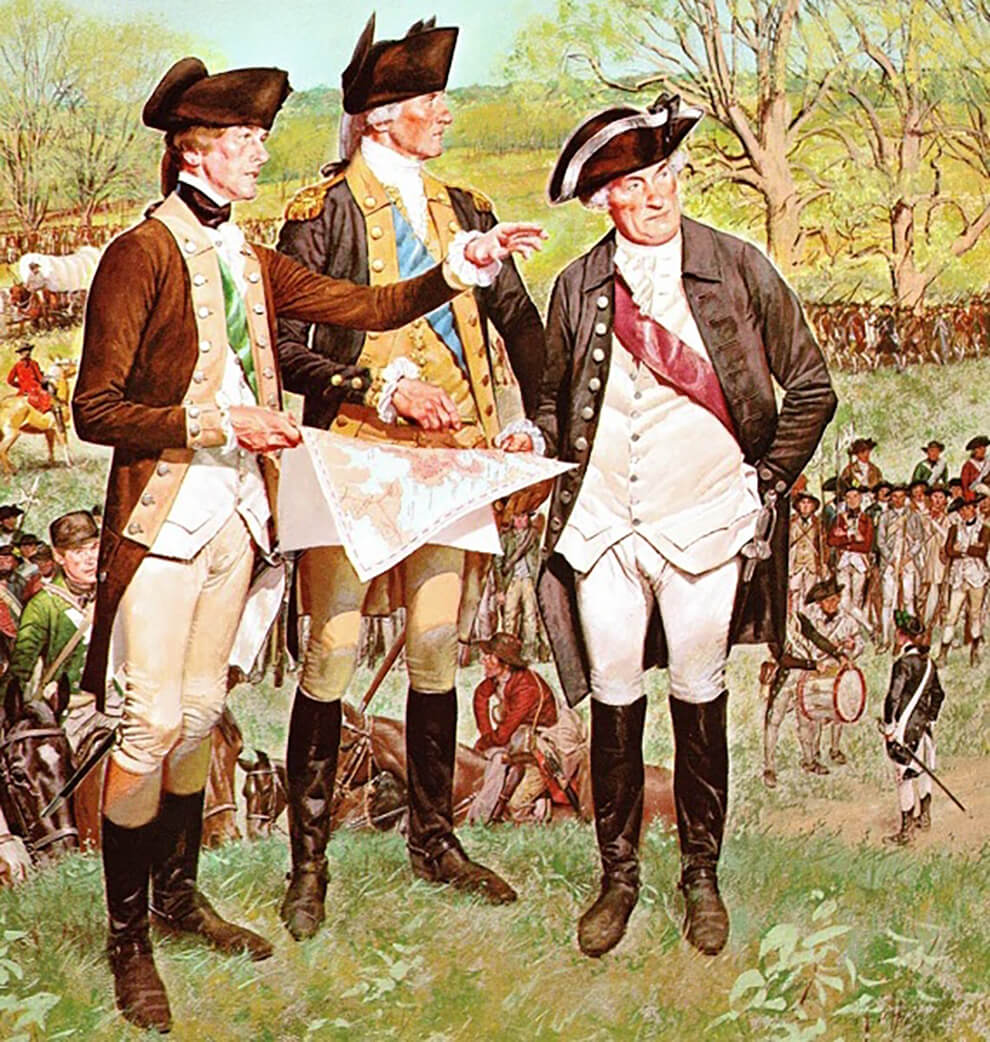
Image source: H. Charles McBarron, Jr. - United States Army U.S. Army Center of Military History, The American Soldier series: Set 3. CMH Pub 70-1-3.
French Influence and Evolving Styles
As the Revolutionary War continued, the uniforms of both the British and American armies evolved in response to changing circumstances and influences. One major factor was the entry of France into the war on the side of the American rebels. French military fashion was highly regarded in the 18th century, and the alliance with France brought a new level of sophistication and elegance to Revolutionary War uniforms.
Many American officers, including Washington himself, began to adopt French-inspired styles, such as the "frock coat," a more tailored and less bulky alternative to the traditional coat. Made of blue wool with white, red, or buff facings, the frock coat became the standard uniform for American officers by the end of the war. The coats often featured elaborate gold or silver lace, epaulettes, and buttonhole trim, emphasizing the prestige and authority of the wearer.
Additionally, many soldiers replaced their tricorn hats with the French "chapeau de bras," a folding bicorne hat that could be easily tucked under the arm when not in use. The bicorne hat was typically adorned with a cockade, a decorative knot of ribbon that displayed the wearer's allegiance. American soldiers often wore a black and white cockade to signify their loyalty to both the United States and their French allies.
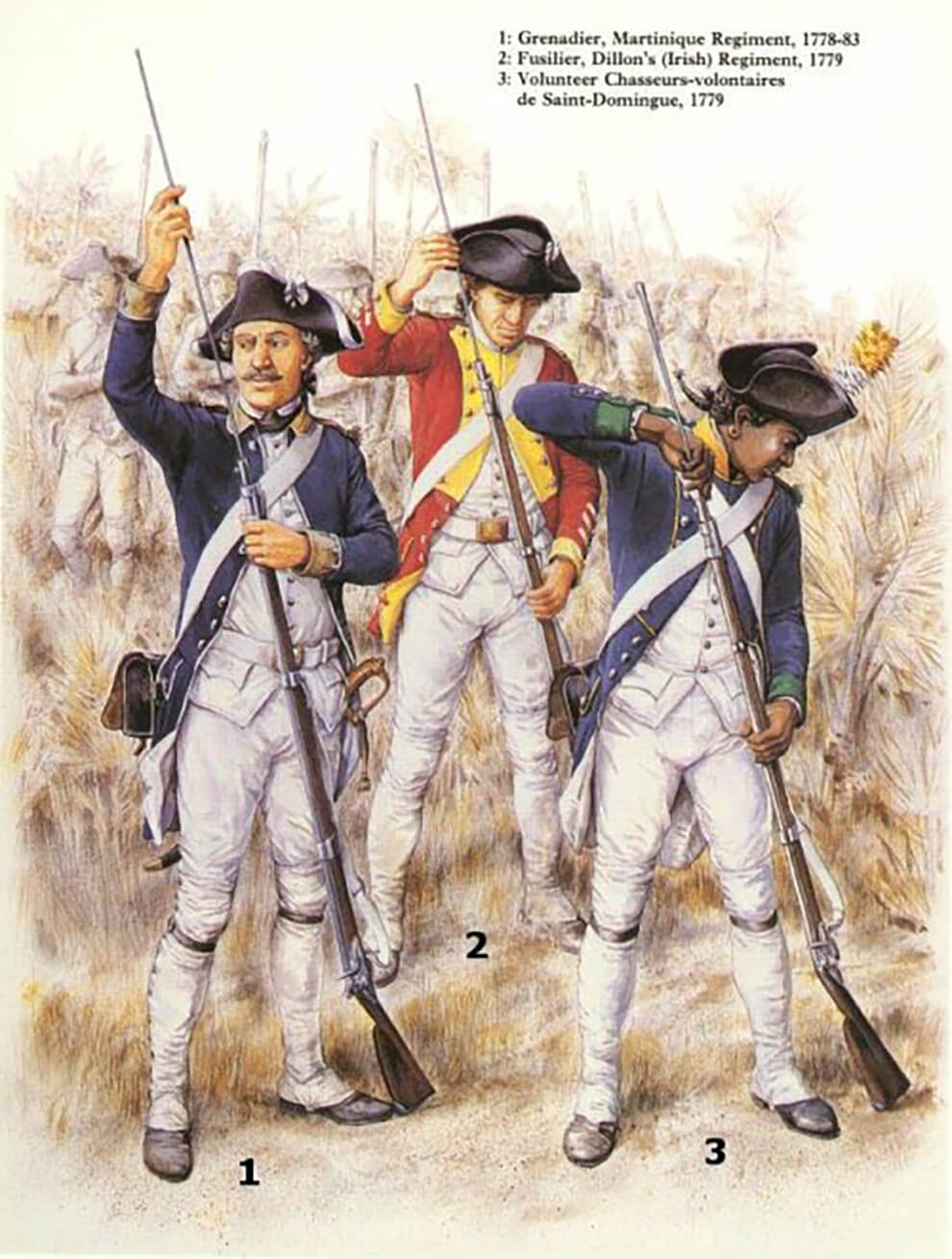
Image source: Wikipedia
British Adaptations: Practicality and Camouflage
The British Army also saw changes in their uniforms during the course of the war. The red coats, while still prevalent, were often modified to better suit the American theatre of operations. For example, some soldiers opted for lighter-weight materials and simpler designs that were more practical for the harsh conditions and long marches experienced in North America. This included the use of linen or lighter-weight wool for coats, as well as the adoption of simpler and more functional patterns.
Additionally, the British began to incorporate more green and brown hues into their uniforms, as these colours provided better camouflage in the dense forests and varied terrain of the colonies. Light infantry units, in particular, adopted green jackets and trousers to blend in with their surroundings. Some units even went so far as to adopt Native American dress, such as moccasins and leggings, in order to move more quietly and efficiently through the wilderness.
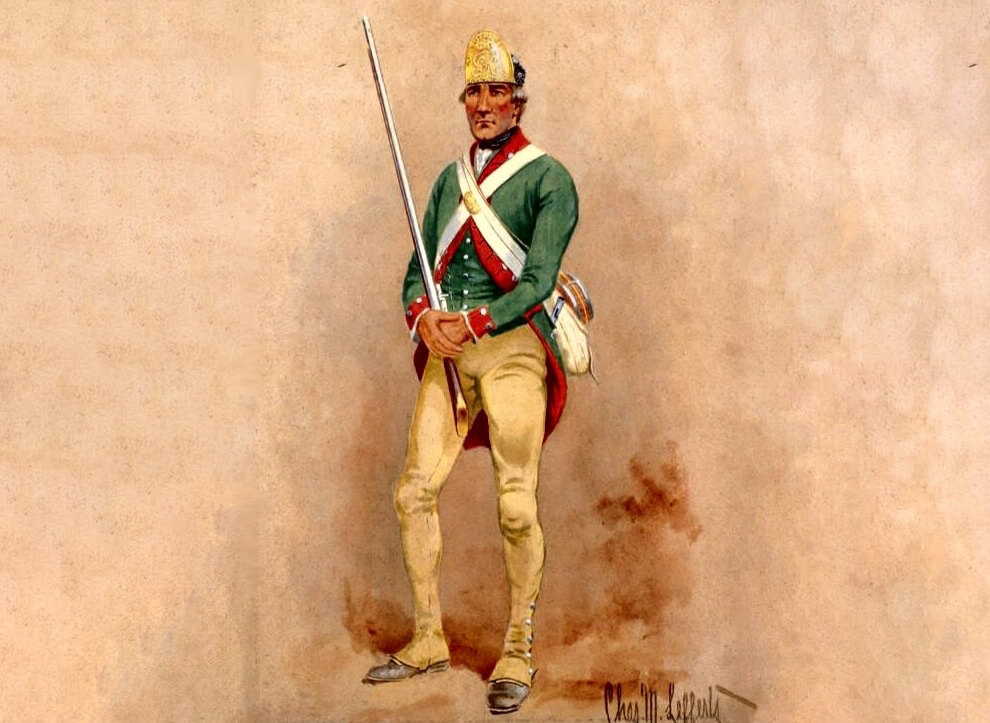
Artist: Charles MacKubin Lefferts, 1910
Hunting Shirts and Rifle Shirts: American Innovation
The Revolutionary War was fought in a wide range of environments, from the stifling heat of the southern colonies to the frigid winters of the north. As a result, both British and American soldiers were forced to adapt their uniforms to suit the conditions in which they fought. This led to a variety of modifications and innovations, some of which have had a lasting impact on military uniforms to this day.
One such adaptation was the use of "hunting shirts" or "rifle shirts" by American soldiers. These loose-fitting, long-sleeved shirts were made from linen or homespun cloth and were worn over the uniform coat for added protection and camouflage. The shirts were often dyed in muted colours such as brown, green, or gray, making them ideal for blending into the North American wilderness. Some hunting shirts also featured decorative fringe along the sleeves and bottom hem, which served a practical purpose by helping to wick away rain and moisture.
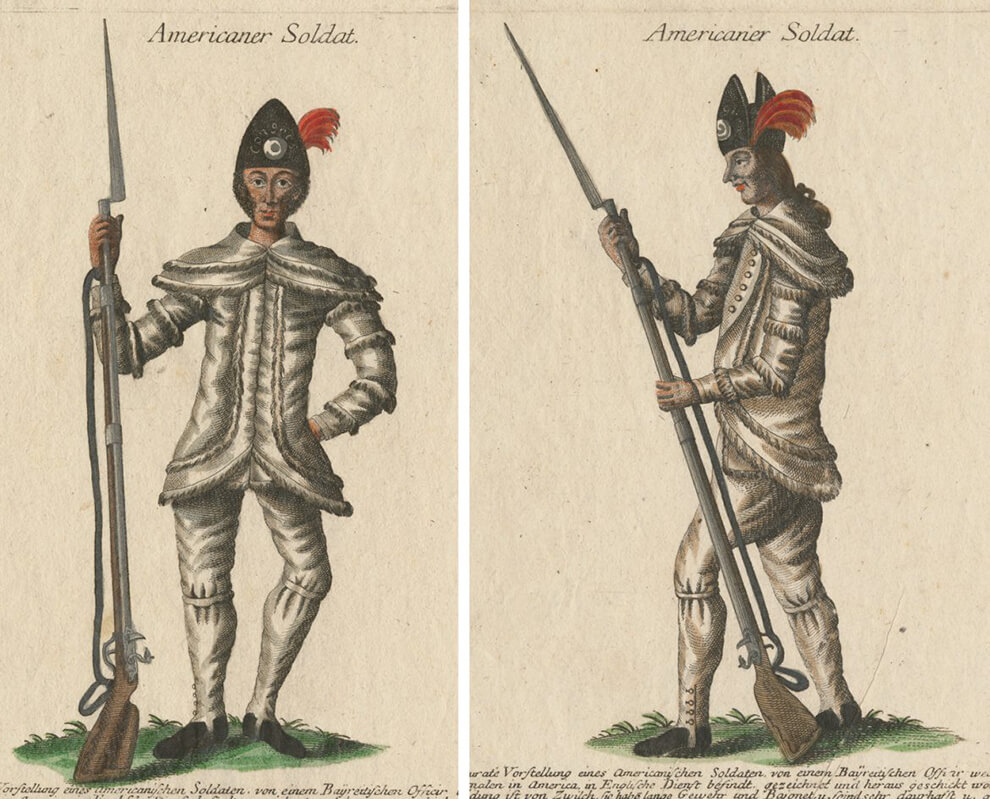
Artist: Johann Martin Will, 1776
Women on the Home Front
Clothing and Supply Support
While the majority of soldiers in the Revolutionary War were men, women played crucial roles in the conflict as well, both on and off the battlefield. One way in which women contributed to the war effort was by making and repairing uniforms for the soldiers. As the Continental Army struggled with limited resources and an unstable supply chain, women's skills in sewing, knitting, and weaving were invaluable in ensuring that soldiers had functional and presentable uniforms.
Women on the home front also worked tirelessly to produce the cloth and materials needed for uniforms, often utilizing household resources such as spinning wheels and looms. They also collected and recycled fabric from worn-out clothing and linens, transforming them into uniforms or other essential items for the troops.
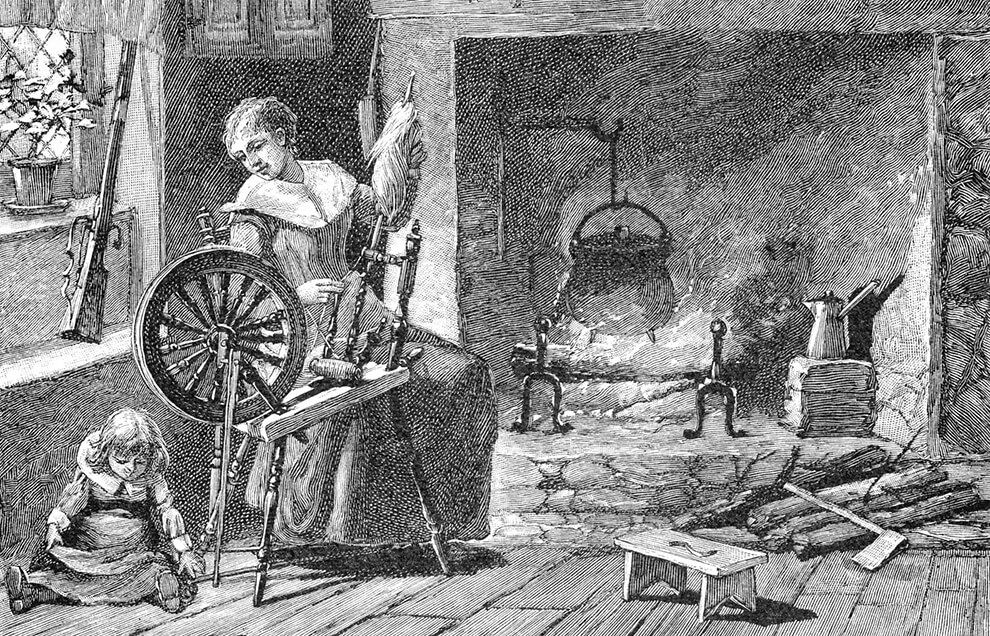
Image source: A Brief History of the United States by Joel Dorman Steele and Esther Baker Steele, 1885
Camp Followers and Disguised Soldiers
Some women, known as "camp followers," accompanied the army and provided essential support services, such as cooking, laundry, and nursing. These women often wore clothing similar to that of the soldiers, including modified versions of the hunting shirt or coat, as well as practical garments like petticoats, aprons, and head coverings.
A small number of women even disguised themselves as men and served as soldiers in the ranks, adopting the same Revolutionary War uniforms as their male counterparts. These women often enlisted under male aliases and concealed their true identities in order to fight for their cause. A few of these female soldiers, such as Deborah Sampson and Margaret Corbin, have become well-known figures in American history for their bravery and commitment to the cause of independence.
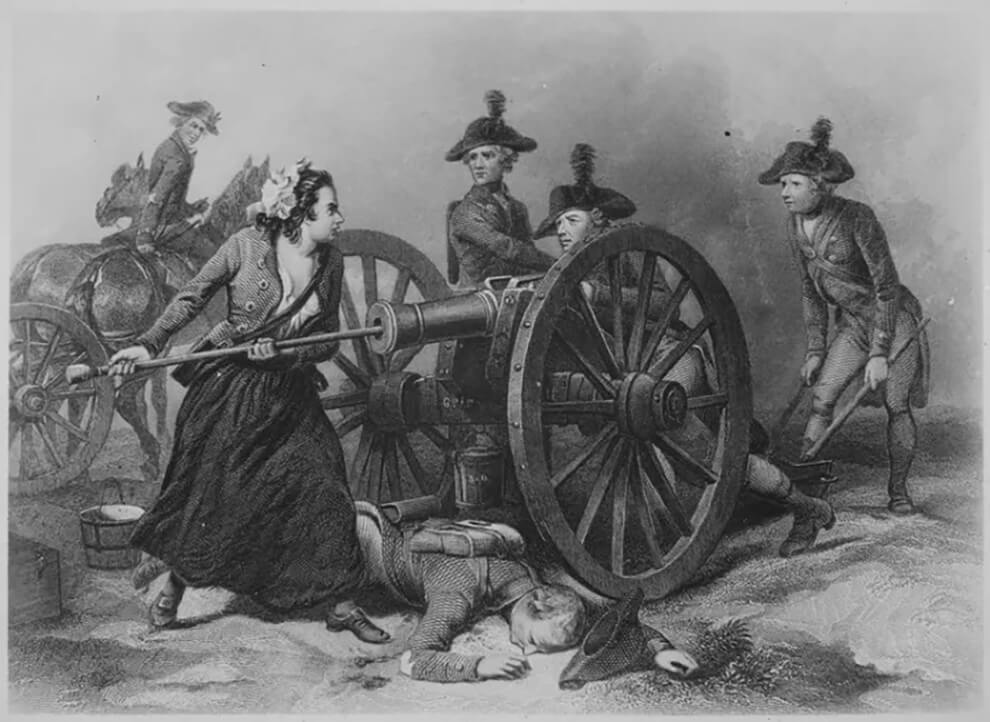
Image source: U.S. National Archives and Records Administration
Conclusion
The Revolutionary War uniforms worn by the British and American armies tell a fascinating story of military tradition, cultural influence, and adaptation to the unique challenges of the conflict. From the iconic red coats of the British to the evolving styles of the Continental Army, these uniforms played a crucial role in shaping the identities and experiences of the soldiers who fought for independence. By studying these garments, we can gain valuable insights into the lives of the men and women who were at the forefront of the American Revolution, and better understand the lasting impact of this pivotal event on the course of history.
As we reflect on the diverse and evolving Revolutionary War uniforms, we are reminded that the struggle for independence was not only a test of military might but also a test of ingenuity, resourcefulness, and adaptability. The uniforms worn by the soldiers of the American Revolutionary War are a testament to the resilience and determination of a young nation fighting for its freedom and identity, and they remain an enduring symbol of the bravery and sacrifice of those who fought to secure their liberties.

